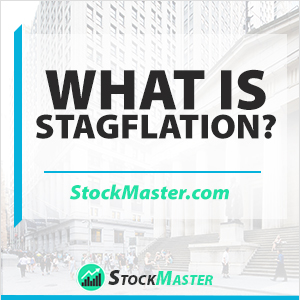 What is Stagflation?
What is Stagflation?
Definition: Stagflation, a combination of stagnate and inflation, is a situation where an economy suffers from high levels of inflation, rising unemployment levels, and stagnating economic growth. Unsurprisingly, the term was coined to describe the effects of inflation and economic stagnation.
High levels of inflation are not usually common in situations where there is slow economic growth. However, stagflation may occur in situations where poor government policies prevent the economy from functioning properly. This type of situation may encourage inflation and also have a negative impact on a country’s GDP.
Stagflation Examples
An economy may find itself in a stagflation situation if the country’s central bank makes the wrong call on monetary supply, such as trying to expand it when they also happen to be limiting supply. This usually happens when a government decides to print money or when the central bank implements policies that lead to more credit. These two instances create inflation while at the same time slowing down the economic growth, thus stagflation.
Back in the 1970s, the U.S attempted to stimulate the economy through currency manipulation while also implementing wage-price controls that limited the money supply. This situation pushed the U.S economy into stagflation. Zimbabwe is a classic example of an economy that was ravaged by stagflation, which subsequently turned into hyperinflation after the government printed too much money.
Stagflation tends to occur when commodity prices surge, especially critical commodities like oil. There was slight stagflation in the global economy in 2008 at the start of the economic recession when oil prices started going up.
Is there a risk of stagflation happening any time soon?
Lately, there have been talks of a potential economic recession in the U.S due to the overstretched economy. Some of the signs of an impending economic recession, such as the inverted yield curve, have already occurred. However, the economy seems to be holding strong, and this is perhaps because we have learned from past mistakes. Central banks are able to react accordingly to the economic changes, and that has been the case, and that is how major economies like the U.S manage inflation and also prevent another economic recession from happening.
The above also explains why stagflation has been less common over the past few years. Central banks have so far improved their fiscal policy measures to shield against the occurrence of issues such as stagflation. It also helps that global liquidity has been on the rise, thus helping to shield against economic evils such as deflation. Corrective measures that are carefully thought out are implemented to manage inflation levels.
Below is a chart showing how stagflation works.
The above chart shows a negative shift in the real GDP occurs despite the higher price levels.
What Causes Stagflation?
Levels of Productivity
Stagflation may occur when an economy is characterized by declining levels of productivity. This might be caused by a decline in outputs, higher production costs, and inefficient workers.
Trade Unions
Sometimes trade unions are also a factor driving stagnation, especially if they happen to be too powerful in terms of their bargaining capacity. They can be a factor because they might try to secure higher wages for members even when an economy is experiencing slow growth. Inflation usually thrives in economies where people are paid higher wages.
Structural Unemployment
An increase in structural unemployment is also another cause of stagflation. It occurs when traditional industries start dying off, leading to lower output and more unemployment.
Oil Prices
Stagflation is also sensitive to rising oil prices, especially due to supply issues. The prices of oil and other key commodities might be on the rise if business costs start rising. The higher costs coupled with aggressive supply may lead to higher levels of inflation, thus causing a negative effect on the GDP.
The Phillips curve
Stagflation is also associated with the Phillips curve, as shown below.
The Phillips Curve attempts to demonstrate the relationship between unemployment and inflation. Stagflation occurs when the curve shifts to the right as shown above. Higher inflation levels cause more unemployment.
